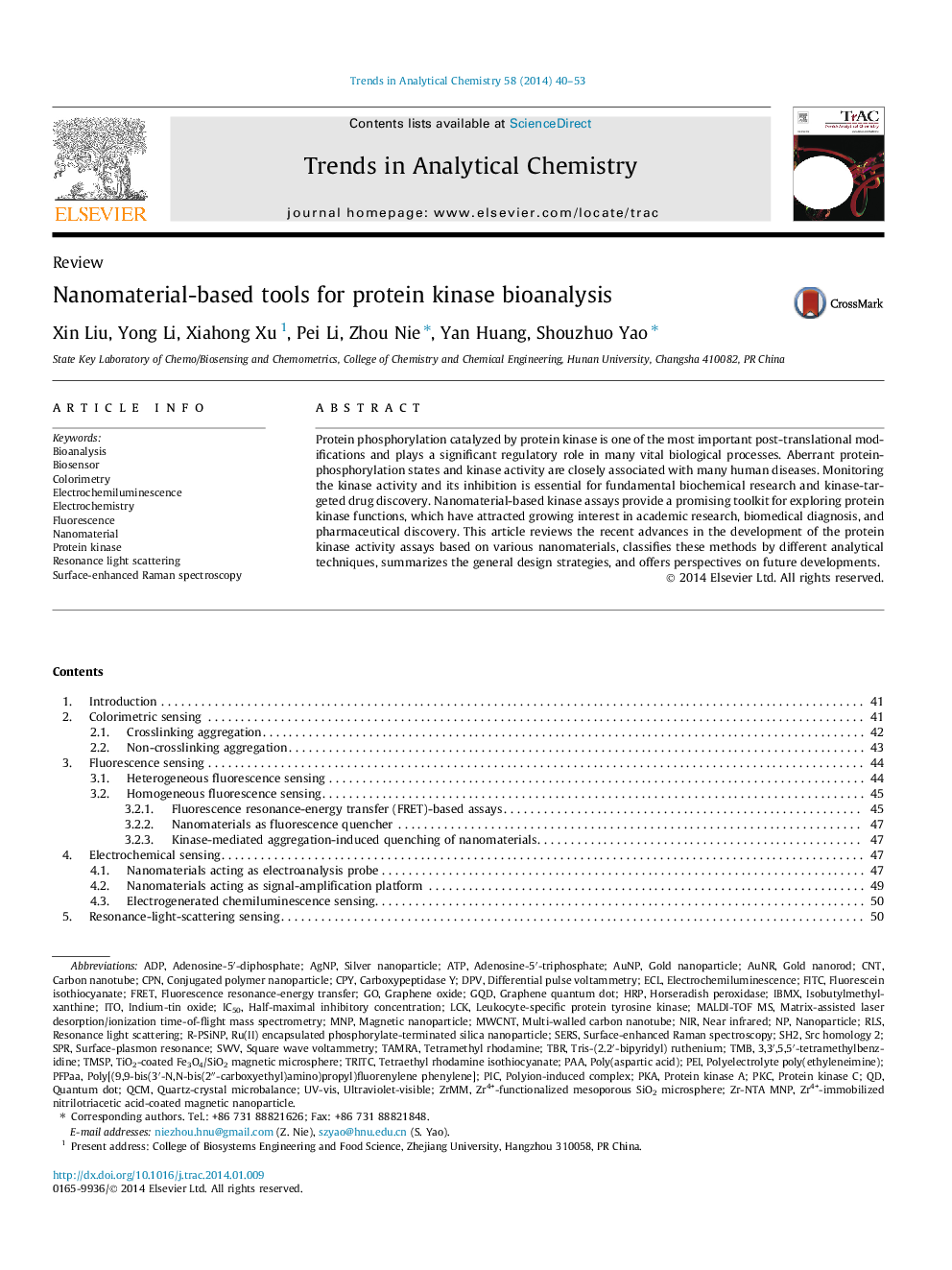| Article ID | Journal | Published Year | Pages | File Type |
|---|---|---|---|---|
| 1247812 | TrAC Trends in Analytical Chemistry | 2014 | 14 Pages |
•Summarizing current applications of nanomaterials in protein kinase assays.•Classifying kinase nano-sensors according to analytical techniques.•Discussing the relative advantages and the limitations of these methods.•Predicting the trend in future development of nanomaterial-based kinase biosensors.
Protein phosphorylation catalyzed by protein kinase is one of the most important post-translational modifications and plays a significant regulatory role in many vital biological processes. Aberrant protein-phosphorylation states and kinase activity are closely associated with many human diseases. Monitoring the kinase activity and its inhibition is essential for fundamental biochemical research and kinase-targeted drug discovery. Nanomaterial-based kinase assays provide a promising toolkit for exploring protein kinase functions, which have attracted growing interest in academic research, biomedical diagnosis, and pharmaceutical discovery. This article reviews the recent advances in the development of the protein kinase activity assays based on various nanomaterials, classifies these methods by different analytical techniques, summarizes the general design strategies, and offers perspectives on future developments.
